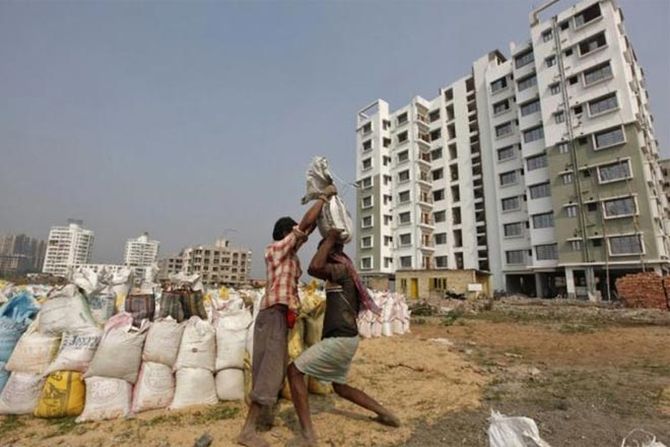Prices in Bengaluru, the National Capital Region, Hyderabad and Ahmedabad, however, witnessed an uptick during the period.

The ongoing liquidity issues plaguing the financial sector, especially the non-bank finance companies (NBFCs) cast their shadow on the real estate segment as well in the first half of calendar year 2019 (H1CY19).
In fact, the price movement / capital appreciation in most cities has not been able to beat inflation rate as well.
Price movement of residential property units in H1CY19 in Mumbai, Pune Chennai and Kolkata witnessed a drop of 3 per cent, 4 per cent, 3 per cent and 2 per cent respectively during the period.
Prices in Bengaluru, the National Capital Region (NCR), Hyderabad and Ahmedabad, however, witnessed an uptick during the period.
“During the last four years, the growth in residential prices in most of the top eight cities of India has been below retail inflation growth and the gap has progressively increased since H1-2016.
"This has helped keep the end-user interested and arrested the downward sales momentum as compared to launches.
"Hyderabad has been the only market to buck the trend and recorded residential price growth over the retail inflation level,” said Shishir Baijal, chairman and managing director at Knight Frank India.
The findings are based on Knight Frank’s India Real Estate review report for the period January – June 2019.
The report monitors demand, supply and prices of residential and office properties in eight cities across the country – Delhi-NCR, Mumbai, Chennai, Kolkata, Bengaluru, Hyderabad, Pune and Ahmedabad.
“Liquidity crunch that started with the IL&FS issue has dented the overall sentiment in the real estate space and is showing no signs of abating till now.
"Speculators are out of the (residential) market now and people are buying more for self-use.
"Given this, price rise going ahead will be nominal. While the prices have seem to have bottomed out, it will take another two – three years for some bullishness to return to this segment,” said Mudassir Zaidi, executive director – north for Knight Frank.
On a pan-India basis, new launches in the residential segment increased 21 per cent during the period under review on a year-on-year basis at 111,175 units, while all-India sales saw an uptick of 4 per cent in H1-2019, making it the third consecutive quarter to record a sales improvement.
That said, 51 per cent of the total launches during H1CY19 have been in ticket sizes under Rs 50-lakh and 78 per cent under Rs 1 crore.
Unsold inventory across top eight markets saw a dip of 9 per cent year-on-year during the period under review at 450,263 units.
While Hyderabad saw a decline of 67 per cent in unsold inventory at 4,265 units, Mumbai was the only market to record an increase in inventory with the overhang rising by 14 per cent to 85,387 units, the report says.
Office market
Action across the office market during the period, however, was in stark contrast to the residential segment. Supply hit a decadal high 2.2 million square meters (23.9 mn sq ft), recording a rise of 31 per cent on a y-o-y basis.
Transaction levels, too, recorded a similar uptick, rising to a decadal high of 2.6 million square meters (27.4 mn sq ft) for space transacted in a single period during H1 2019 due to demand from IT/ITeS and co-working spaces.
Average rental values across the eight cities grew 10 per cent y-o-y during H1CY19.
Among cities covered by Knight Frank, Ahmedabad witnessed the maximum y-o-y rental growth of 14.3 per cent, while those in Bengaluru and Hyderabad grew at 13.5 per cent and 11.3 per cent, respectively.
“IT/ITeS sector accounted for 35 per cent of all transactions in H1CY19, as compared to the 28 per cent in H1CY18.
"The share of BFSI declined 13 per cent in H1CY19 compared to 18 per cent in H1CY18, as NBFCs and banks with higher NPAs curbed expansion plans and liquidate non-core assets,” the report says.
Photograph: Rupak De Chowdhuri/Reuters











